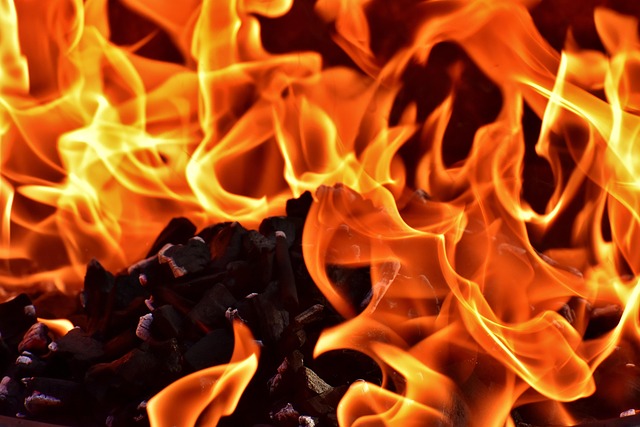California's real estate market offers opportunities in the reconstruction and sale of fire-damaged properties, especially in wildfire-prone areas. Investors can acquire these distressed assets at discounted rates, renovate or demolish them, and capitalize on post-fire demand for updated living spaces while contributing to community rebuilding. However, challenges include unforeseen repair costs and strict legal/financial considerations, necessitating strategic planning, thorough damage assessments, expert consultations, and transparent marketing to succeed in selling fire-damaged houses in California.
California’s real estate market presents a unique blend of challenges and opportunities for investors. With diverse landscapes and vibrant cities, understanding the state’s dynamics is crucial for success. This article delves into key aspects, including navigating post-fire damage investments, evaluating properties, and profitable selling strategies. We explore legal and financial considerations specific to California investors interested in buying and rehabilitating fire-damaged homes, providing valuable insights for those looking to capitalize on this niche market.
- Understanding California's Real Estate Market for Investors
- Challenges and Opportunities in Investing Post-Fire Damage
- Evaluating Fire-Damaged Properties in California
- Strategies for Selling a Fire-Damaged House Profitably
- Legal and Financial Considerations for California Investors
Understanding California's Real Estate Market for Investors

California’s real estate market presents a unique landscape for investors, with diverse opportunities across its vast regions. The state’s economy and population growth have fueled a robust property market, attracting investors nationwide. One niche that has gained significant attention is the reconstruction and sale of fire-damaged properties, particularly in areas prone to wildfires.
Selling a fire-damaged house in California can be a lucrative venture for savvy investors. With the rising frequency and intensity of wildfires, many homeowners are left with insured properties that require extensive repairs or complete rebuilding. Investors who specialize in these opportunities can acquire these distressed assets at potentially discounted prices and then facilitate either a thorough renovation or a strategic demolition to create new, modern homes. This process not only helps rebuild communities after disasters but also offers investors the chance to capitalize on the post-fire real estate market’s demand for safe, updated living spaces.
Challenges and Opportunities in Investing Post-Fire Damage

After a wildfire, California real estate investors face both challenges and opportunities. One of the primary hurdles is purchasing fire-damaged properties at potentially discounted prices, only to encounter additional expenses for repairs and renovations. This can be particularly complex in areas prone to frequent wildfires, where property values may not fully recover despite significant restoration efforts.
However, investors also have a chance to contribute to community rebuilding and recovery. Many homeowners are eager to sell their fire-damaged houses to move on, creating a market for those willing to take on the renovation project. Investors who successfully navigate these challenges can acquire properties at attractive prices, potentially yielding substantial returns once restored and resold or rented in the competitive California real estate market.
Evaluating Fire-Damaged Properties in California

When considering selling a fire-damaged house in California, investors must carefully evaluate the property’s potential and risks. Fire damage can vary greatly, from minor smoke and scent residue to extensive structural harm. It’s crucial to conduct thorough inspections, assessing both visible and hidden damages. Look for signs of charring, water damage from firefighting efforts, and any structural instability—all these factors impact a property’s value and repair costs.
California’s real estate market dynamics also play a role in decision-making. Investors should research local housing trends, demand for rental properties or potential reconstruction projects, and the area’s overall resilience to future natural disasters. While selling a fire-damaged house comes with challenges, strategic investments and thoughtful considerations can turn these properties into lucrative opportunities.
Strategies for Selling a Fire-Damaged House Profitably

When it comes to selling a fire-damaged house in California, investors face a unique challenge but also an opportunity to turn a profit. The key lies in strategic planning and a thorough understanding of the market. Before listing, assess the extent of damage and compare repair costs with potential selling prices; this step is crucial for determining profitability. Engaging professionals who specialize in fire restoration can provide accurate estimates and ensure the property’s value is maximized post-renovation.
Marketing plays a vital role in successful sales. Highlighting the potential for a new beginning can attract buyers who appreciate the chance to renovate. Utilizing online listings, social media, and local real estate networks allows investors to reach a broader audience. Additionally, offering transparent information about the fire damage history can build trust with prospective buyers, fostering a competitive yet honest selling environment in California’s real estate market.
Legal and Financial Considerations for California Investors

California real estate investors face unique legal and financial considerations, especially when dealing with properties that have experienced fire damage. Selling a fire-damaged house in California involves navigating complex regulations aimed at ensuring the safety and health of future occupants. Investors must adhere to strict building and safety codes, often requiring extensive repairs and renovations before listing the property for sale. These measures not only impact the investor’s bottom line but also delay the selling process.
From a financial standpoint, investors should account for unexpected costs associated with fire damage repairs, as well as potential legal liabilities. They must carefully assess the property’s value post-renovation, considering both market trends and the unique challenges of selling a fire-damaged asset. California’s stringent environmental regulations, such as those regarding asbestos removal, further add to the financial burden, necessitating thorough due diligence and expert consultations throughout the renovation process.
California’s real estate market presents unique opportunities and challenges, especially after natural disasters like wildfires. Understanding the specific dynamics of fire-damaged properties is crucial for investors looking to navigate this landscape successfully. By evaluating properties thoroughly, implementing effective sales strategies, and considering legal and financial aspects, investors can capitalize on profitable selling opportunities in California while ensuring a smooth process when dealing with fire-damaged homes. This comprehensive guide equips readers with the knowledge needed to thrive in this niche market.






